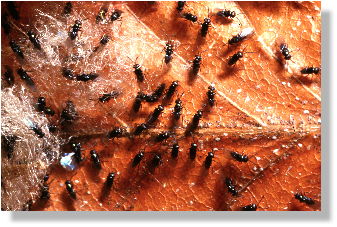 |
In case of polyembryony, a cell splits and the two cells separate. Only after several splits of that kind, a cell remains together with its secluded half to form an embryo. These different kinds of cell splitting have taken place after the Litomastix mother had placed her eggs into to caterpillar. There is no final answer to the question, how many eggs were laid by the Litomastix female. They were at least two, since José could identify the two different genders. At the same time, she did not lay 1.600 eggs - this would have been too much of body substrate to give away for a little insect like a (?chalcididae). |